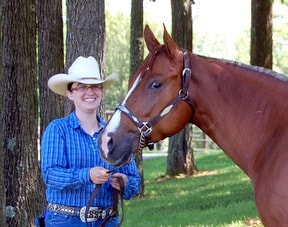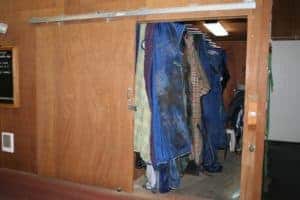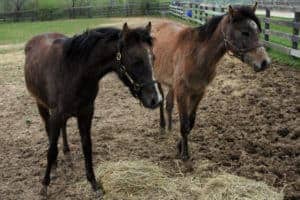
Poll Recap: Winter Hay Stores
Of the 748 voters, 257 (34%) said they order and store more than 6 tons of hay for the winter.


Of the 748 voters, 257 (34%) said they order and store more than 6 tons of hay for the winter.

Of the 1,212 voters, 848 (70%) indicated they do not clip their horses’ whiskers.

Of the 737 voters, the majority (58%) indicated that they own or have owned a draft horse or draft-cross.

Of the 1,473 voters, 684 (46%) said that they feed their horses hay on the ground or do not use a hay feeder.

Of the 1063 voters, 385 (36%) said that they washed their horse blankets at home.

Of 766 voters, 29% said they worry most about buck or calf knees.

Of 810 voters, 29% said their biggest blanketing headache involved preventing horse-made tears and holes.

Of 400 participants, 79% said they’d never heard of the bacterium and only 5% had known a horse with it.
Common variable immunodeficiency is a rare, but serious disease in adult horses that often leads to hospitalization, said Maria Julia Bevilaqua Felippe Flaminio, DVM, MS, PhD, Dipl. ACVIM, who presented research on the topic at the American College of Veterinary Internal Medicine Forum, held June 3-6 in Montréal, Quebec.
Common variable immunodeficiency (CVID) is a humoral (in the
A horse residing in Harford County, Md., was euthanized and tested positive for rabies, resulting in a 45-day quarantine of the farm.
Around July 13, owners of the horse began to notice drastic changes in the horse’s behavior and gait. A large animal veterinarian examined the animal and suspected rabies.
The horse was then sent to the University of Pennsylvania’s New Bolton
A new stall-side pain scoring system for horses could help veterinarians better determine the need for analgesics in lame horses, according to Kirsten Wegner, DVM, Dipl. ACVA (veterinary anesthesiology), an assistant professor of anesthesia at the University of Pennsylvania’s New Bolton Center.
In order to properly manage pain in lame horses, veterinarians must measure how much pain
Certain levels and durations of training may predispose horses to aortic valve prolapse (AVP), said Gayle Hallowell, MA, VetMB, CertVA, Dipl. ACVIM-LAIM (large animal internal medicine), MRCVS, who presented research findings at the American College of Veterinary Internal Medicine Forum, held June 3-6 in Montréal, Quebec.
To date, the prevalence of aortic valve prolapse in the horse
Only nine months after launching TheHorse.com’s Thoroughbred Adoption Service, 175 horses have found new homes.
The list of available Thoroughbreds is composed of horses of all ages and backgrounds, from young colts that have just begun their careers to retired track stars needing some pasture time.
Lameness, weight loss, colic, and equine Cushing’s syndrome are the four top reasons for euthanizing an older horse, said Catherine McGowan, BVSc, PhD, RCVS, European specialist in equine internal medicine, who presented research by Thomas McGowan, BSc, DVM, PhD, at the American College of Veterinary Internal Medicine Forum, held June 3-6 in Montréal, Quebec.
To date there have been no
Intentionally approaching a wild horse in Currituck County, N.C., could get visitors in some serious trouble. On July 6, the Currituck County Board of Commissioners made it illegal to intentionally come anywhere within 50 feet of a wild horse.
The Wild Horse Ordinance, originally enacted in 1989, previously declared it only unlawful to lure a horse within 50 feet if the offender was
Owners and equine rescue groups with unidentified Thoroughbreds that sport lip tattoos now have access to free identification services provided by the Jockey Club.
Unveiled in April, the free tattoo lookup service allows horse owners and
Stay on top of the most recent Horse Health news with